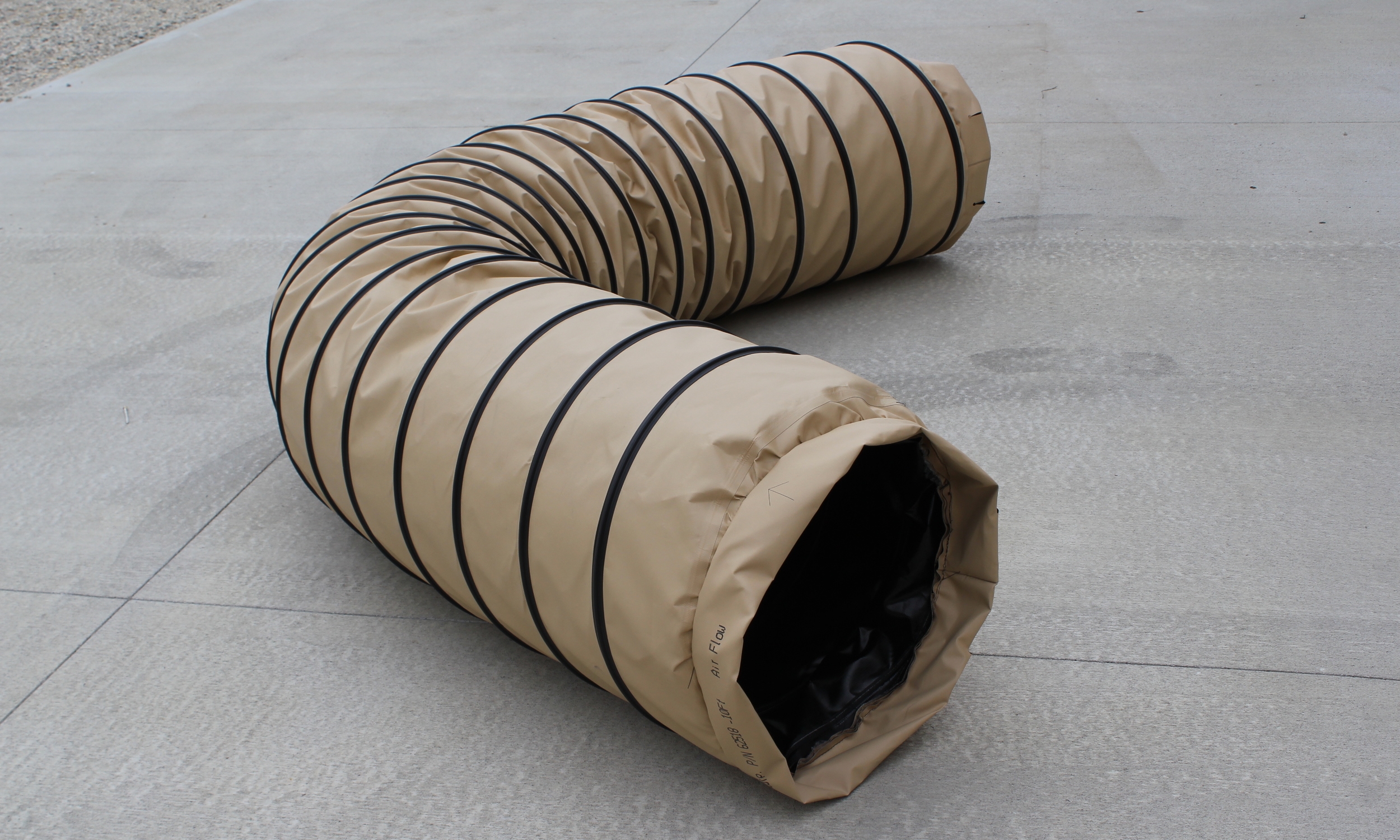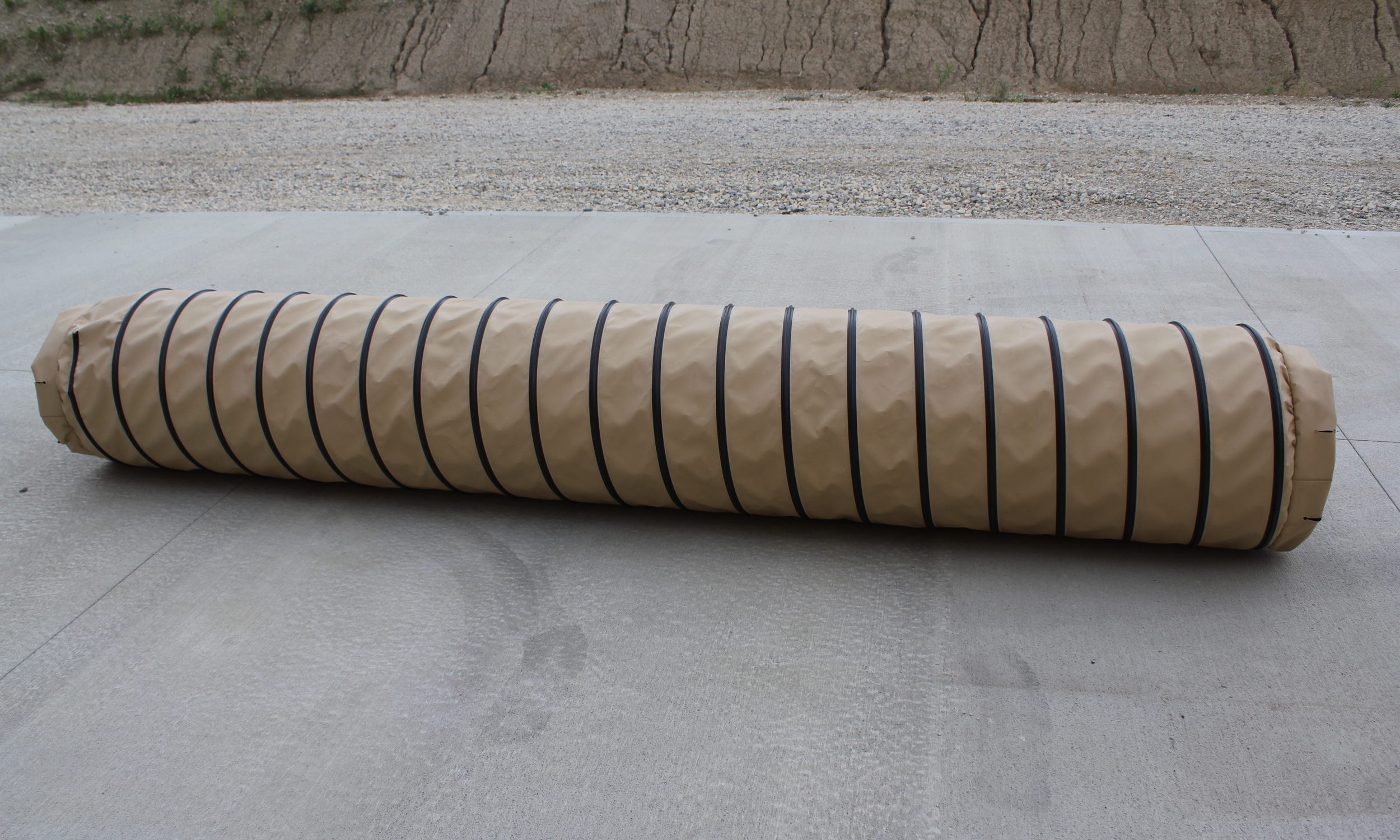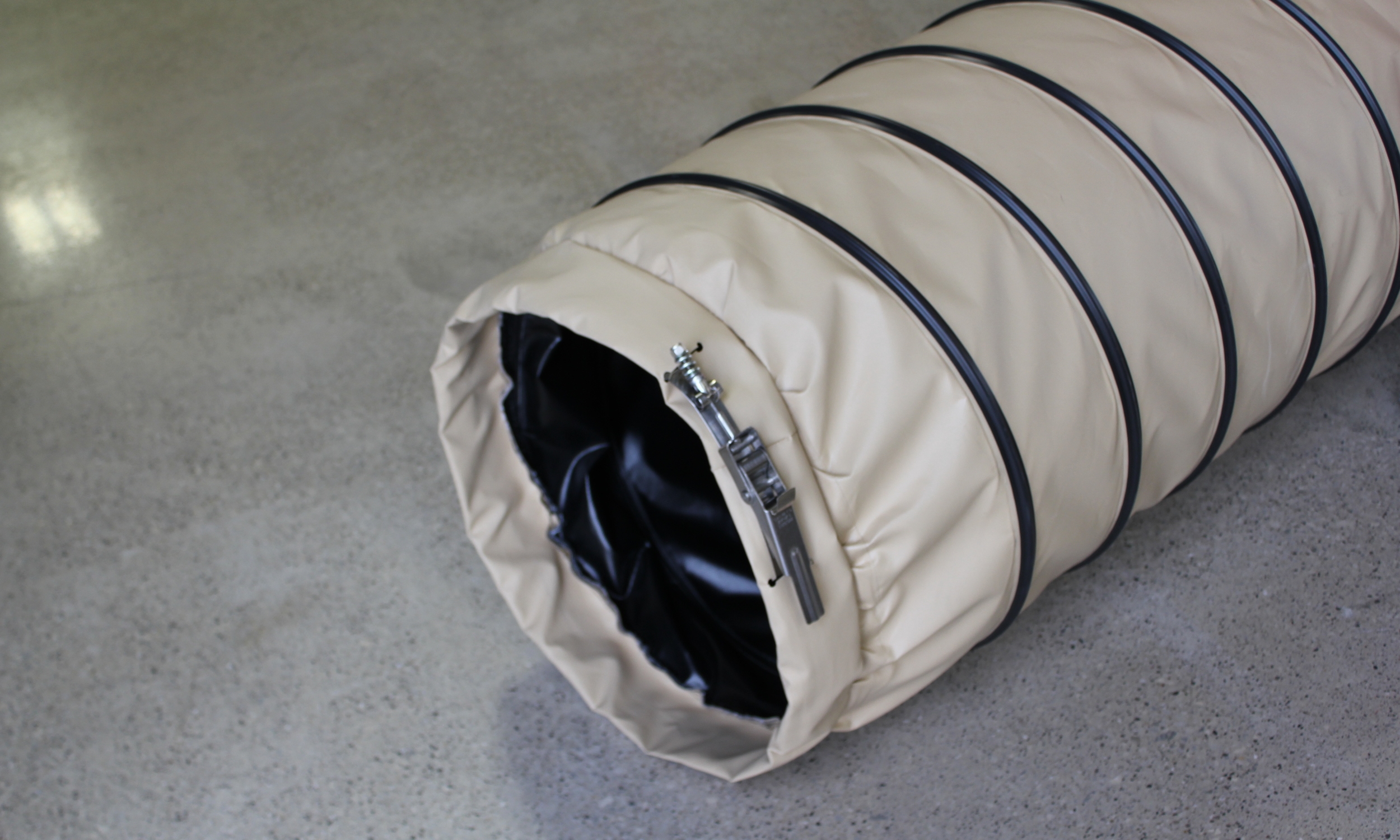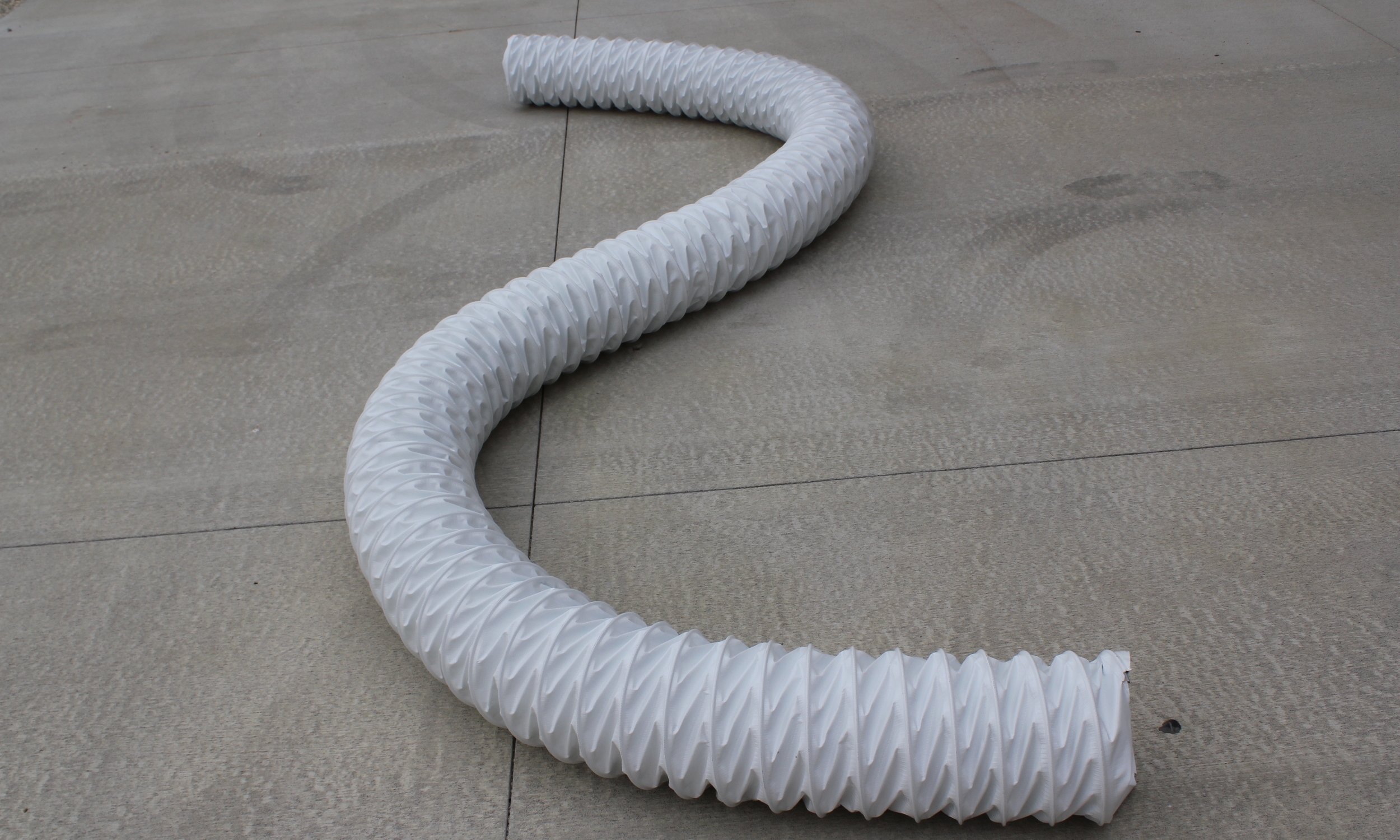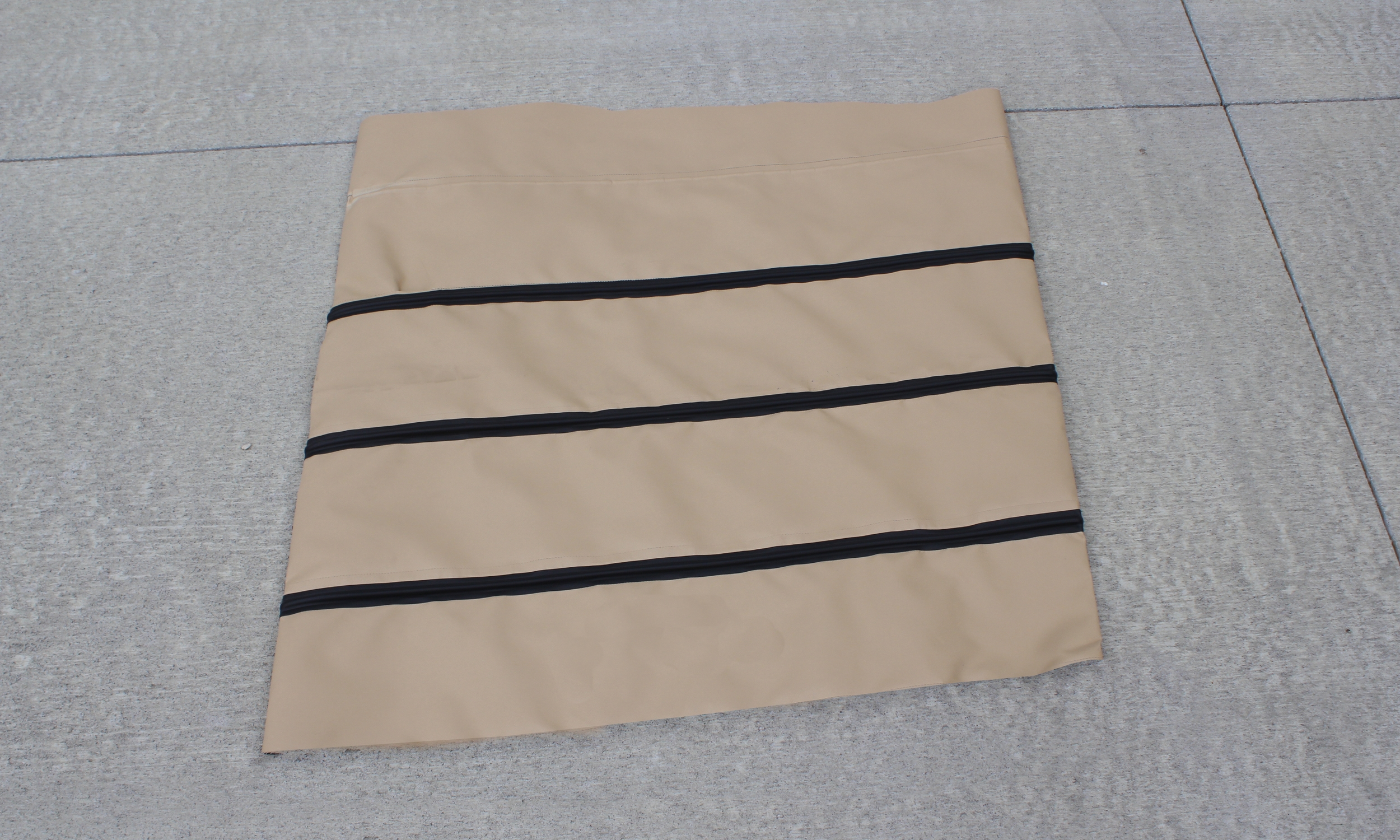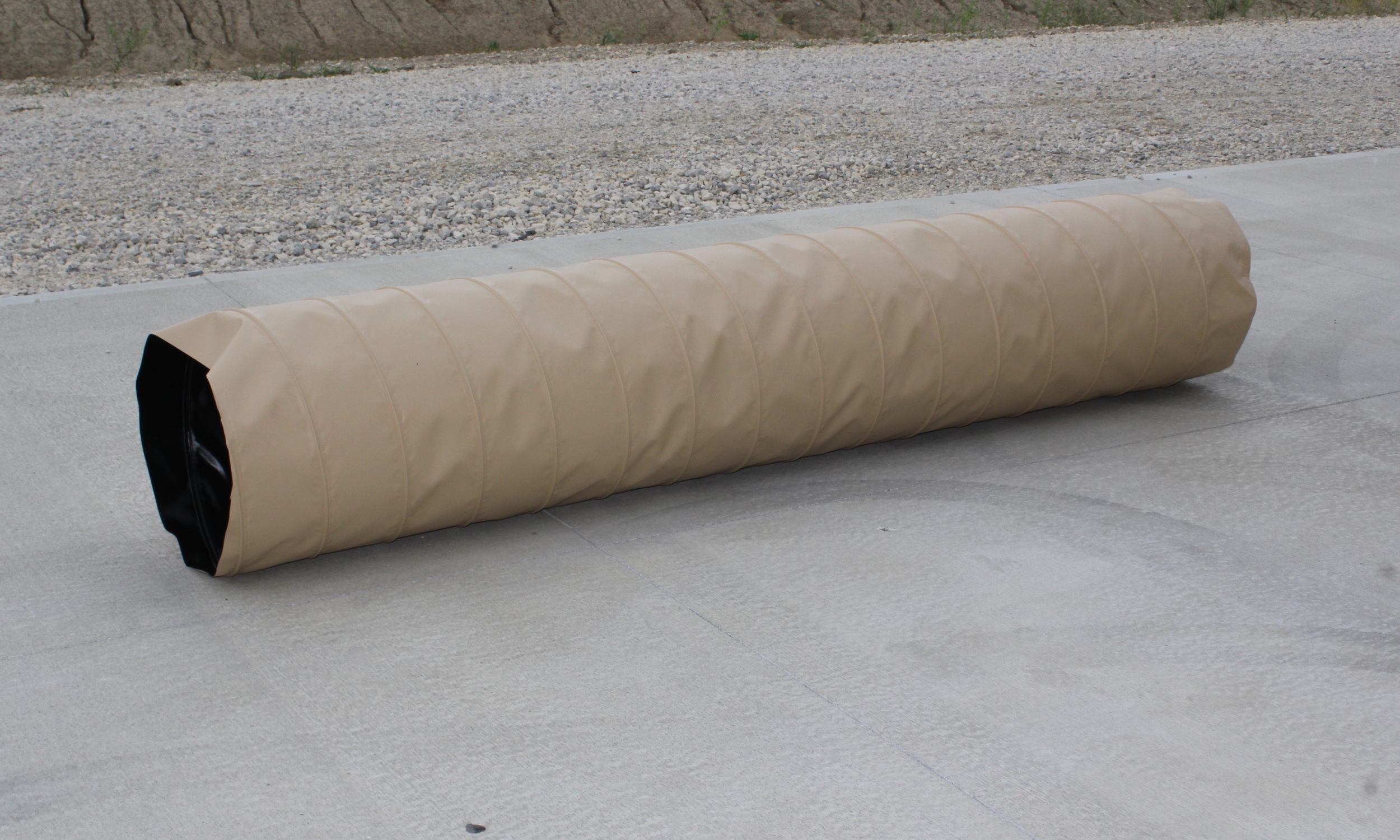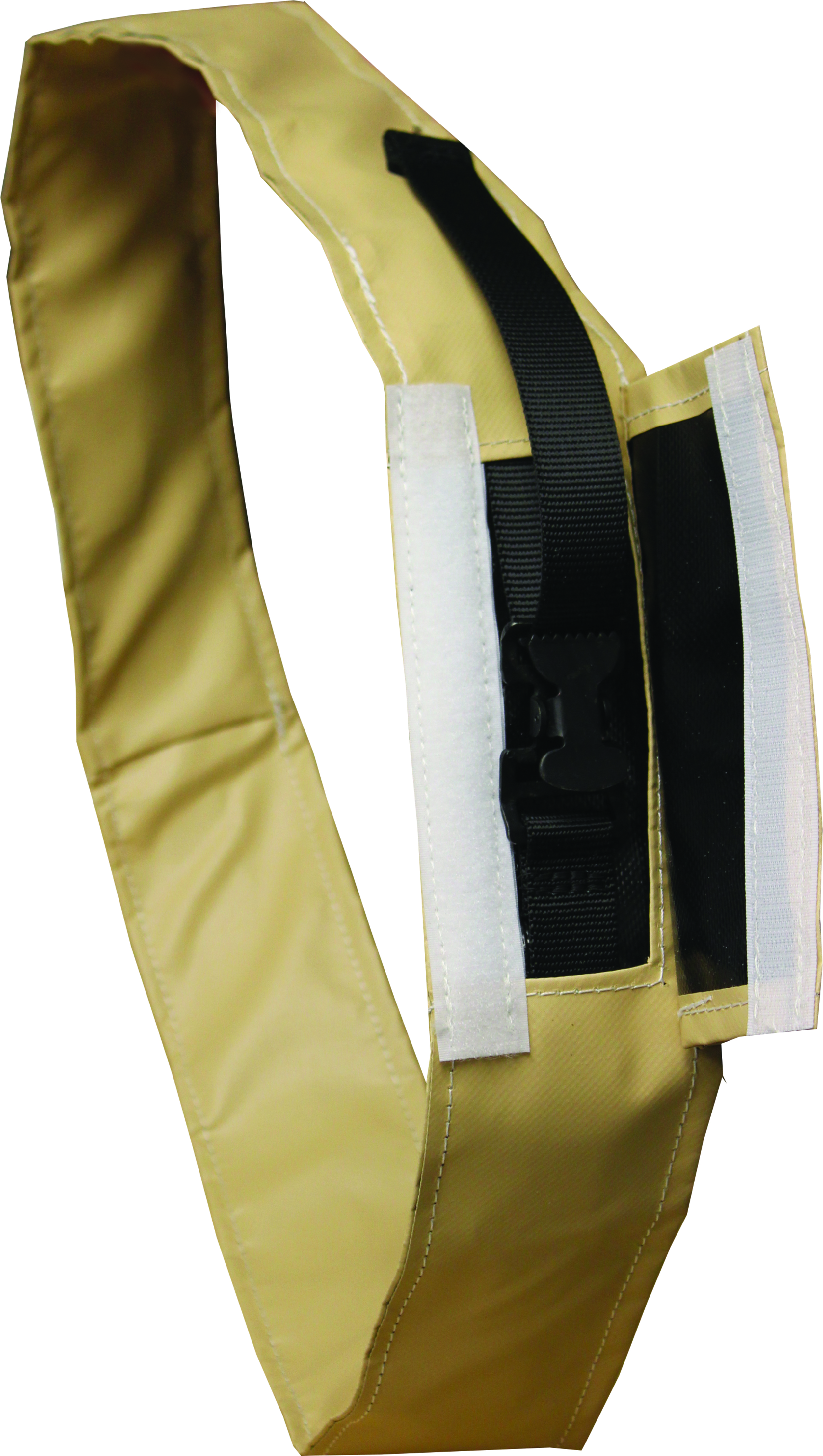With sewn spiral-wire and heat sealed lay-flat varieties, Celina’s Ducting production has expanded to accommodate nearly every market. Base materials include any fabric used to create the structures we design, and include Collective Protection chem-bio materials to Infrashield™ treated vinyl and more.
Wire Spiral Ducting is flexible, created with a variety of pitches. Diameters range from 2” to 48” with finishing options that include wear stripping reinforcement and various finishings. The fully automated FX100 allows us to take on bulk production with fabric, wire, and reinforcement assembled at the same time to reduce labor costs. With basic designs for industrial, agricultural, military and aerospace businesses, we can manufacture ducting for any application.
Spiral Ducting from Celina is crafted to your exact needs; from your choice of base materials to the myriad end connecting options, your order can be specially modified to fit your exact end use.
Materials
Celina’s experience in bonding fabrics gives us the advantage of a warehouse full of optional materials for duct fabrication. Our fabrics include:
|
MIL-20696 |
20696 - Tan |
20696 - Green |
|
MILPRF-44103 (Black/Tan) |
MILPRF-44103 (Black/Green) |
MILPRF-44103 (Infrashield) |
|
V1650 - 16 oz. Block-Out White |
MSHA Yellow (2 weights) |
Bondcote Bondbarrier |
|
Laminated PVC’s |
Coated PVC’s |
And more! |
Materials used to create ducting are held to the same flame resistance specifications that are required of fabric structures used by or around individuals.
In addition to stock materials, Celina can also create ducting insulation. We offer both air-pocket buffering and industry standard batting insulation to provide the ducts with advanced environmental control abilities. Insulated ducting is great for ECU systems, as it resists external environmental interference.
Wear Strips
In order to combat everyday wear and tear associated with the most common failure points, wear strips can be added to the ducting to protect the areas where the internal wire may cause additional duct wall damage. Wear stripping is attached to the outside of the ducts during the manufacturing process and is available in widths of 0.75”, 1”, and 1.25”. The addition of wear stripping is optional.
Widths
Having chosen the base materials to create the duct, tubing diameter is chosen. To aid in the customization of all spiral ducting, we offer tubing from 2” to 48” in diameter, with intermediate diameters available in 2” increments.
Pitch
Further customization of the ducting can include the pitch of the internal reinforcement wire; the pitch of the wire refers to the distance between corresponding areas on two loops in the wire. We offer standard pitches of 2”, 4”, and 6”. Tighter pitch grants more duct strength, but imposes greater overall rigidity. A larger pitch will allow the tubing to move more freely, but offers less reinforcement along a given distance of tubing.
Finishing
Each end of the manufactured duct can be finished with any of our connectors/finishing options:
- Belt Cuff - a strip of fabric is incorporated into the cuff, equipped with an alligator clip fastener
- Rigid Coupling - a solid internal metal hoop is attached to the end, allowing you to connect Belt or Screw Cuffs which require a solid base for connection
- Screw Clamp Cuff - a built-in steel band with a screw clamp for easy tightening
- Wire Rope Coupling - ends of the ducting have a wire ring incorporated into the fabric, which is inserted into a ducting end with the same finish;coupling assemblies are used to secure the two rings together
- Soft Cuff - a fabric extension is added to the end without support wire
- Hook and Loop Cuff - Loop is sewn around the cuff of one duct end, with a hook flap attached to the connecting end of the next duct; the hook flap wraps around the loop end (hook flaps correspond to the air entry end)
- Zipper Cuff - corresponding sides of a zipper are sewn to the ends ducting intended to connect
Due to the manufacturing process, air flow within spiral ducting is required to flow in one specific direction. Keep this in mind when choosing your finish for each end, to ensure that when installed the air flows in the proper direction.



